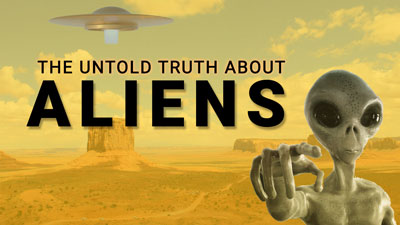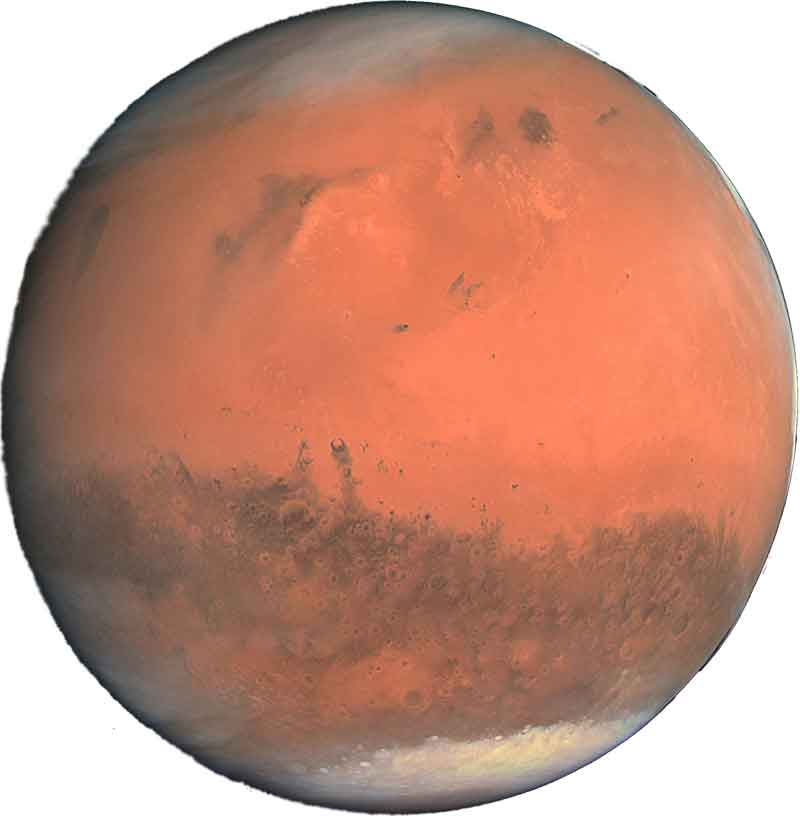 Planet Mars is the most habitable place in our solar system after the Earth that can be colonized by humans easier than any other planet. Mars is also one of the mysterious planets because it regularly poses new mysteries that need to be solved. For example, the question about the presence of life, methane, underground lakes.
Planet Mars is the most habitable place in our solar system after the Earth that can be colonized by humans easier than any other planet. Mars is also one of the mysterious planets because it regularly poses new mysteries that need to be solved. For example, the question about the presence of life, methane, underground lakes.
We have chosen the top 10 most amazing facts about this red planet that you will like.
Mars is Red Colored
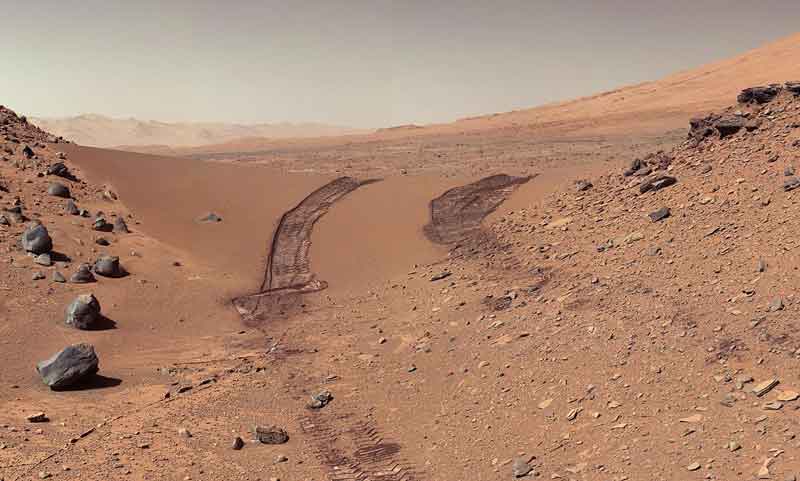 Mars is a red-colored planet and that was the reason for naming it after the Roman god of war. The reason for its red color is due to the presence of iron oxide on its surface. Iron oxide forms when iron and oxygen react together. The exact reason for the chemical reaction between oxygen and iron is still unknown, but one study suggests that it may be due to weathering.
Mars is a red-colored planet and that was the reason for naming it after the Roman god of war. The reason for its red color is due to the presence of iron oxide on its surface. Iron oxide forms when iron and oxygen react together. The exact reason for the chemical reaction between oxygen and iron is still unknown, but one study suggests that it may be due to weathering.
So how iron oxide is more on the surface of the Mars as compared to Earth which has more iron than Mars? One of the reason is due to higher gravity of the Earth which pulled more iron down towards the core when the planet Earth had melted few billion years ago. The Mars has less gravity than the Earth so all the iron couldn’t go down to the core. The iron left on the surface of Mars reacted with oxygen and formed iron oxide.
Mars was a Habitable Place
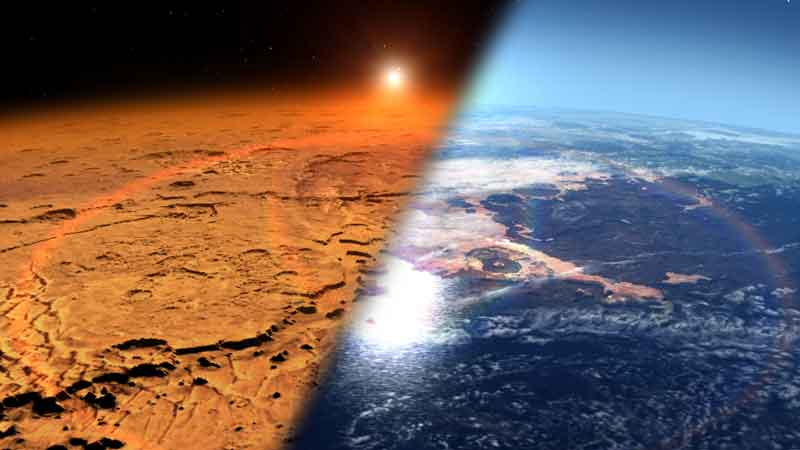 Mars is an amazing planet in our solar system that we can colonize other than the Earth. But colonizing the Mars doesn’t mean that you can walk freely without wearing a space suit. Because Mars has very lower temperatures than the Earth, there is no oxygen in its atmosphere, and the atmosphere is about 100 times thinner than the Earth’s atmosphere. The thinner atmosphere will vaporize the liquid water instantly when exposed. But things were different in the past; the Mars was a habitable planet which had many lakes of liquid water on its surface.
Mars is an amazing planet in our solar system that we can colonize other than the Earth. But colonizing the Mars doesn’t mean that you can walk freely without wearing a space suit. Because Mars has very lower temperatures than the Earth, there is no oxygen in its atmosphere, and the atmosphere is about 100 times thinner than the Earth’s atmosphere. The thinner atmosphere will vaporize the liquid water instantly when exposed. But things were different in the past; the Mars was a habitable planet which had many lakes of liquid water on its surface.
So what happened to Mars? One of the main cause that made the Mars inhabitable is the loss of its strong magnetic field that protected it against solar storms and winds. The strong magnetic field on the Mars was due to its inner dynamo which it had lost about 4.2 billion years ago. After which there was no magnetic field to protect the Mars; the solar winds and storms ripped the atmosphere in few hundred thousand years. As a result, Mars became an inhabitable planet and without liquid water.
Life on Mars – Does it exist?
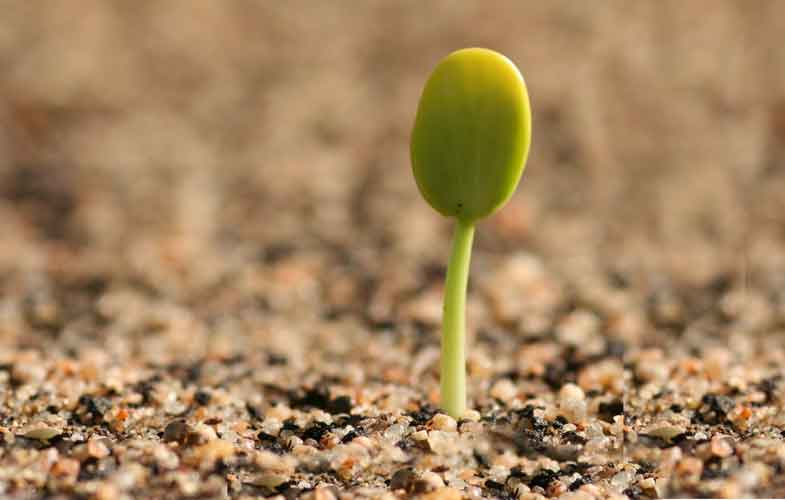 There are trillions of trillion planets in our observable universe that revolves around a star. But scientists have not yet discovered any planet with the presence of life, but there is a high possibility. In our own solar system, there are locations where the possibility of life exists. Among them, Mars is the best candidate to look for life.
There are trillions of trillion planets in our observable universe that revolves around a star. But scientists have not yet discovered any planet with the presence of life, but there is a high possibility. In our own solar system, there are locations where the possibility of life exists. Among them, Mars is the best candidate to look for life.
Today, the Mars is not a habitable place for the life to survive on its surface. But in the past the things were different; Mars was a habitable place where the lakes of liquid water furnished. But due to some events, Mars lost its atmosphere and the liquid water on the Mars began to disappear until it became completely dry. Scientists are finding evidence about the existence of life on Mars when it was a habitable place. Also, the underground lakes of liquid water have been found recently and some scientists suspect maybe we can get a sign of life there. If we are able to find any clue of life on Mars, it will be clear that life is common in our universe.
Mars May have Rings in the Future

Planet Mars has two moons in its orbit; one is Phobos and the second is Deimos. The largest orbiting moon of the Mars is Phobos which is 11 km in the radius and is closer to Mars than Deimos.
How these moons stuck in the orbit of the Mars? It is still unknown. But one of the odd thing that scientists have found is that the Phobos is not going to live longer than 50 million years. Because each year it is getting closer and closer to Mars, and after about 50 million years it will directly hit Mars, or it will rip apart in the thin atmosphere of Mars. It will result in the formation of the ring around Mars.
Olympus Mons – Biggest Volcano of the Solar System on the Mars
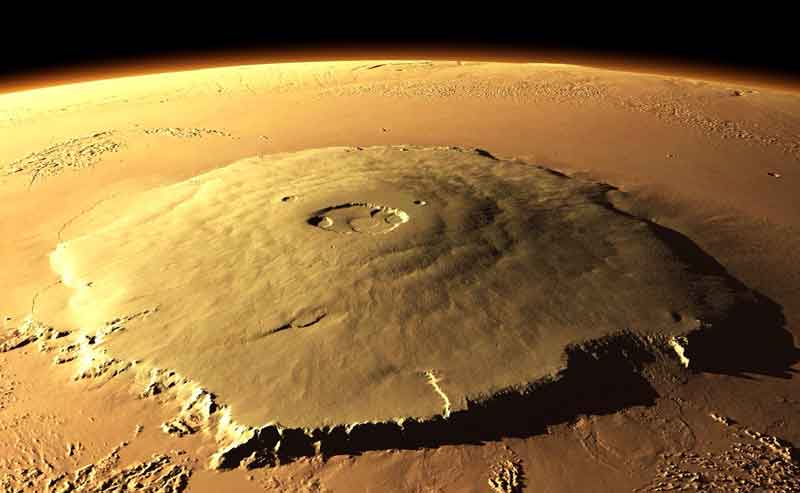
Mars is the 4th terrestrial planet from the Sun and is smaller in size than the Earth. Despite being a smaller planet then the Earth, it has largest mountain and volcano in our solar system, called Olympus Mons. The height of Olympus Mons is about 24 km (16 miles) which larger than the largest peak on the Earth. The largest peak on the Earth is the peak of Mount Everest which is only 8.8 km.
There are reasons for the formation of such a high volcano as compared to volcanoes of the Earth. Some of these reasons are lesser gravity of Mars than the Earth, lack of plate tectonics, and the slope of the mountain itself. The maximum possible height of a mountain is limited by the gravity of the planet and its slope. The lesser the gravity the more height a mountain can get. But being too sloppy mountain means it can’t take quakes and eventually it won’t be able to grow large.
The Olympus Mons has the advantage of being on the planet with less gravity and its slope is very shallow. It is so shallow that, if you stand on the peak of that volcano you won’t notice any major difference in the height.
Best Planet for Colonizing and Terraforming
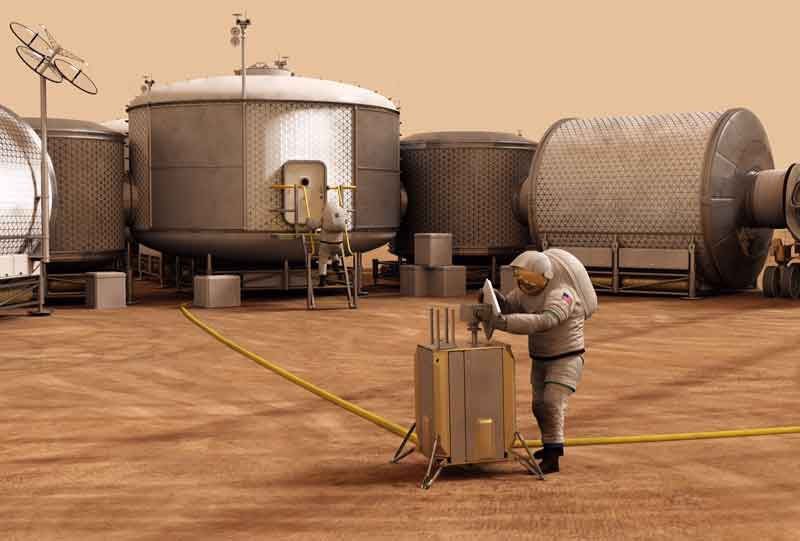 When it comes to colonizing and terraforming another planet, Mars is the best fit. Mars is smaller in size than the Earth and has a solid surface. They are many reasons that make the Mars the best planet for colonizing humans after the Earth. These reasons are:
When it comes to colonizing and terraforming another planet, Mars is the best fit. Mars is smaller in size than the Earth and has a solid surface. They are many reasons that make the Mars the best planet for colonizing humans after the Earth. These reasons are:
- More hospitable than other planets in our solar system after the Earth.
- It is found from simulations that, the Mars will survive the red giant stage of our Sun that will occur about 4.5 billion years from now. In the red giant stage, the sun will swell, eventually eating the orbits of the Earth.
- There is water on Mars in a frozen
- There are many minerals on the Mars including iron oxide that contains oxygen that can be extracted.
- The soil of Mars can be used to grow plants.
There many more reason other than these which makes the Mars a 2nd most hospitable place after the Earth that we can colonize. However, according to NASA, we can’t colonize Mars with currently available technology. But in the future, there are high chances of colonizing Mars.
Mars had Once Lakes of water on the Surface
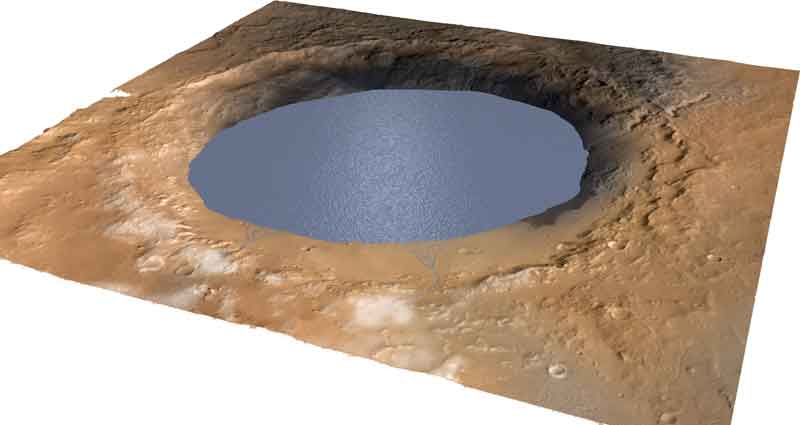 Today the liquid water does not exist on the surface of Mars due to lower atmospheric pressure which is insufficient to prevent the water from evaporation. But things were different in the past, scientists have found many rivers – that are dry now – contain the evidence about the flow of liquid water. Scientists also suggest that Mars once had an ocean that covered about 20% of its surface and the average depth of that ocean was about a mile.
Today the liquid water does not exist on the surface of Mars due to lower atmospheric pressure which is insufficient to prevent the water from evaporation. But things were different in the past, scientists have found many rivers – that are dry now – contain the evidence about the flow of liquid water. Scientists also suggest that Mars once had an ocean that covered about 20% of its surface and the average depth of that ocean was about a mile.
The liquid water disappeared completely in a period of few hundred thousand years after the Mars lost its magnetic field about 4.2 billion years ago.
The Atmosphere of Mars Contains Methane
 Mars has an atmosphere much thinner than the Earth’s atmosphere – about 100 times. This atmosphere is composed of many gases which include:
Mars has an atmosphere much thinner than the Earth’s atmosphere – about 100 times. This atmosphere is composed of many gases which include:
- 96 % carbon dioxide
- 9% Nitrogen
- 9% Argon
- Traces of Methane
- Traces of oxygen and other gases
The presence of methane has posed another mystery that needs to be solved. Because methane is an organic compound that is mostly released due to biological activities on the Earth. But what released the methane on Mars? Scientists suggest that this may be due to some geological activities that have released methane in the atmosphere. Also, the amount of methane changes about 10 folds in many regions. The exact answer of what released the methane on the Mars and why its amount change in some regions is yet to be found.
Pieces of Mars on the Earth
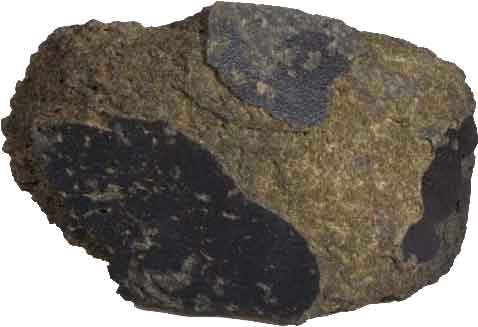
Mars, about few billion years ago was hit by a large asteroid much like what happened on the Earth, which thrown debris of the Mars in space. Some debris felt down due to the gravity of the Mars but some were lucky enough to leave Mars and escaped into space. Many of the debris has fallen on the Earth as meteorites. Scientists have found some meteorites that have been identified as the pieces of Mars.
Liquid Water on the Mars – Does It Exist Today?
The question about the presence of water on Mars has scratched heads of many scientists. But recently in the last two decades, scientists have gathered many proofs about the existence of water on Mars in a frozen state at polar ice caps.
But what about liquid water? Liquid water can’t exist on the surface of the Mars due to low atmospheric pressure. But recently in 2018 scientists have found evidence about the presence of large underground lakes of liquid water. The ground above the liquid water lakes protects the water from evaporating into the low-pressure atmosphere.






